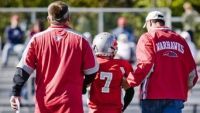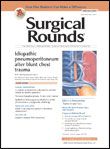Identifying Risk Factors for Overuse Injury and Burnout in Youth Athletes
In light of the increasingly intense competition in youth sports, the American Medical Society for Sports Medicine (AMSSM) has issued a new position statement that is of interest to healthcare providers, especially surgeons.

In the United States, 27 million children between the ages of 6 and 18 play team sports, and many of them participate in more than one. By and large, youth athletes gain more self-esteem, learn to work on peer teams, and are less likely to be obese. However, the competition in many youth sports has become intense.
Kids often push themselves too hard in a quest for sports-based scholarships, local or national recognition, placement on a lucrative professional team, or a spot on an “elite” roster. As a result, children are increasingly participating in high-intensity training that shifts the emphasis from general skill and social development to winning at all costs, including injury and burnout.
In light of this, the American Medical Society for Sports Medicine (AMSSM) has issued a new position statement that is of interest to healthcare providers, especially surgeons.
The paper outlines the risk factors and injuries unique to skeletally immature young athletes and describes specific high-risk overuse injuries and their associated management challenges and potential long-term consequences. Such facts include:
- Approximately one-half of youths develop overuse injuries, which occur most often in runners.
- Overuse injuries may be more likely to occur during the adolescent growth spurt, with intensive training a significant risk factor for injury.
- Children’s readiness for sports depends on their level of growth and motor, sensory, cognitive, social, and emotional development, as well as the specific sport’s requirements. These factors do not necessarily correlate with age, as children develop at different rates.
- Coaches and parents may lack knowledge about children’s normal physical and psychosocial development and readiness for certain tasks.
- Youth baseball pitchers who pitch over 8 months per year are more likely to require shoulder or elbow surgery.
- Among youths who incur anterior cortical tibial stress fractures and undergo surgical repair, the majority usually drop out of sports for an average of 4 months.
The AMSSM statement is a must-read for surgeons and primary care providers who see young athletes in their practices and strive for vigilance regarding the risk of overuse injuries and burnout.
